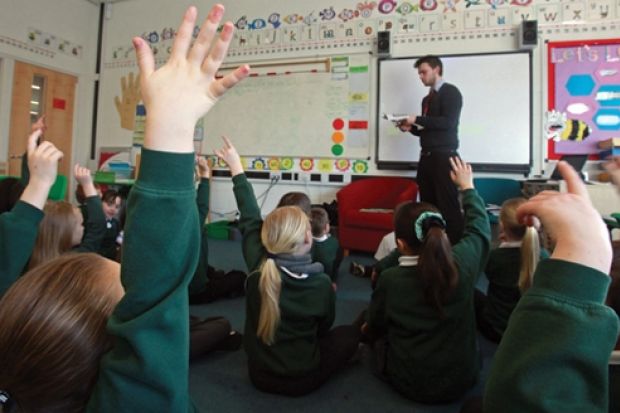Source: Getty
Who wants to go to university? Outreach should stretch to primary level
Universities admitting high numbers of low-income students will receive more resources in a shake-up of the National Scholarship Programme.
The programme, which will be worth £150 million by 2014-15, was announced by the coalition government shortly before the vote in December 2010 to treble maximum tuition fees to £9,000 a year. It offers students from families earning £25,000 a year or less the chance to receive at least £3,000 in financial support in their first year.
But the scheme has been roundly criticised by academics, students’ unions and higher education experts, who have argued that it was hastily conceived and is difficult to access.
There are also criticisms that the distribution of NSP funds, which is based on an institution’s size, is unfair because pre-1992 universities with relatively few poor students often receive more money than post-1992 institutions with higher intakes from deprived backgrounds. For instance, the University of Cambridge received £411,000 this academic year from the NSP - more than the University of Bradford (£345,000) or the University of Bolton (£3,000).
The Department for Business, Innovation and Skills has now announced that the allocation method will change in 2014-15 in light of a Higher Education Funding Council for England review.
The revised allocation method will ensure that “the money follows the student and goes where it is most needed”, a BIS spokesman said.
“The NSP was introduced in a rush and we did not have much time to implement it,” David Willetts, the universities and science minister, told Times Higher Education.
“We’ve taken time to step back and make improvements.”
He said that part-time students would now be eligible for the NSP, and institutions could use philanthropic donations to match-fund state contributions to the scheme. “That is great for potential donors and good for institutions, too,” Mr Willetts said.
A passage on the changes was contained in guidance published by the Office for Fair Access on 17 January, titled How to Produce an Access Agreement for 2014-15.
It explains how universities can meet their obligations to improve access to higher education for socially disadvantaged groups.
The guidance outlines how universities’ outreach activities should target children as young as seven, while also seeking to identify potential mature students. “While work with teenagers is very useful and should continue, we are keen to see more long-term schemes that start at a younger age and persist through…school,” said Offa’s director, Les Ebdon.
He also encouraged institutions to collaborate on outreach and to evaluate more closely which schemes are most effective.




